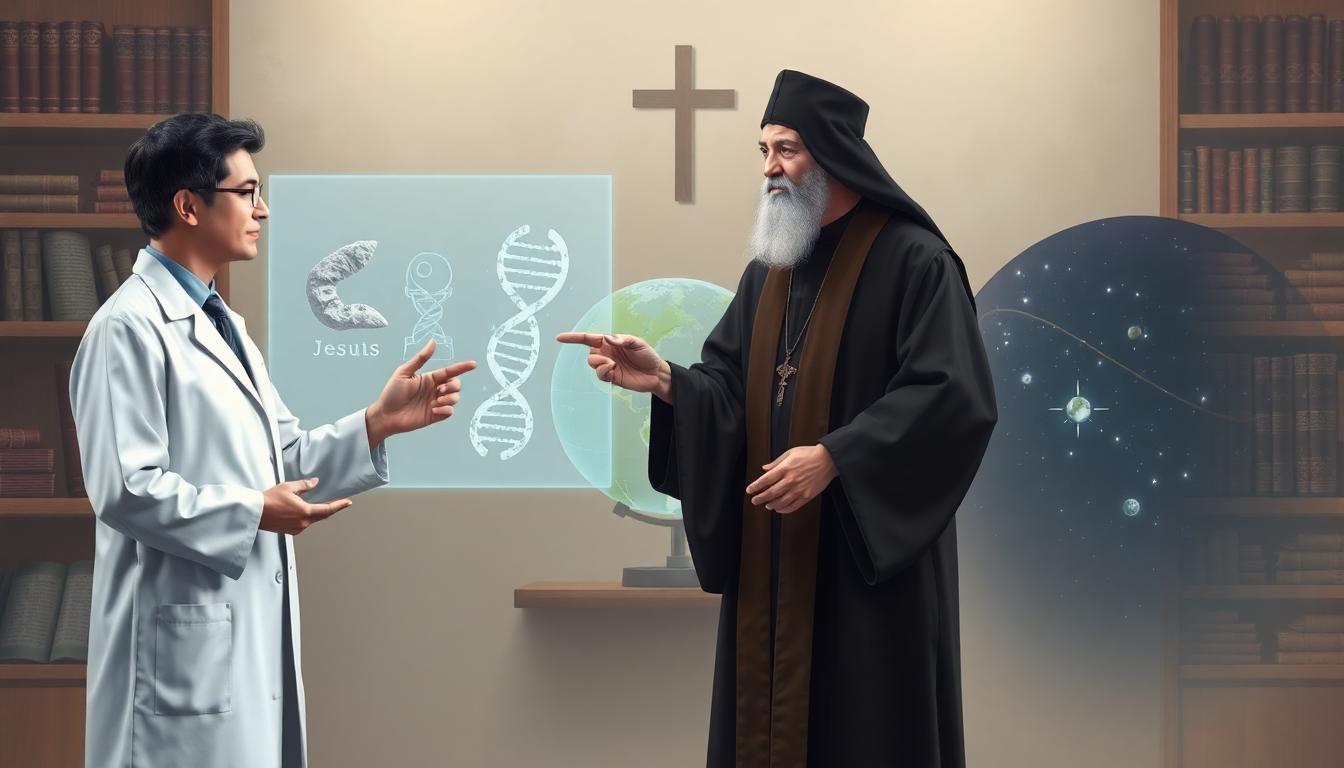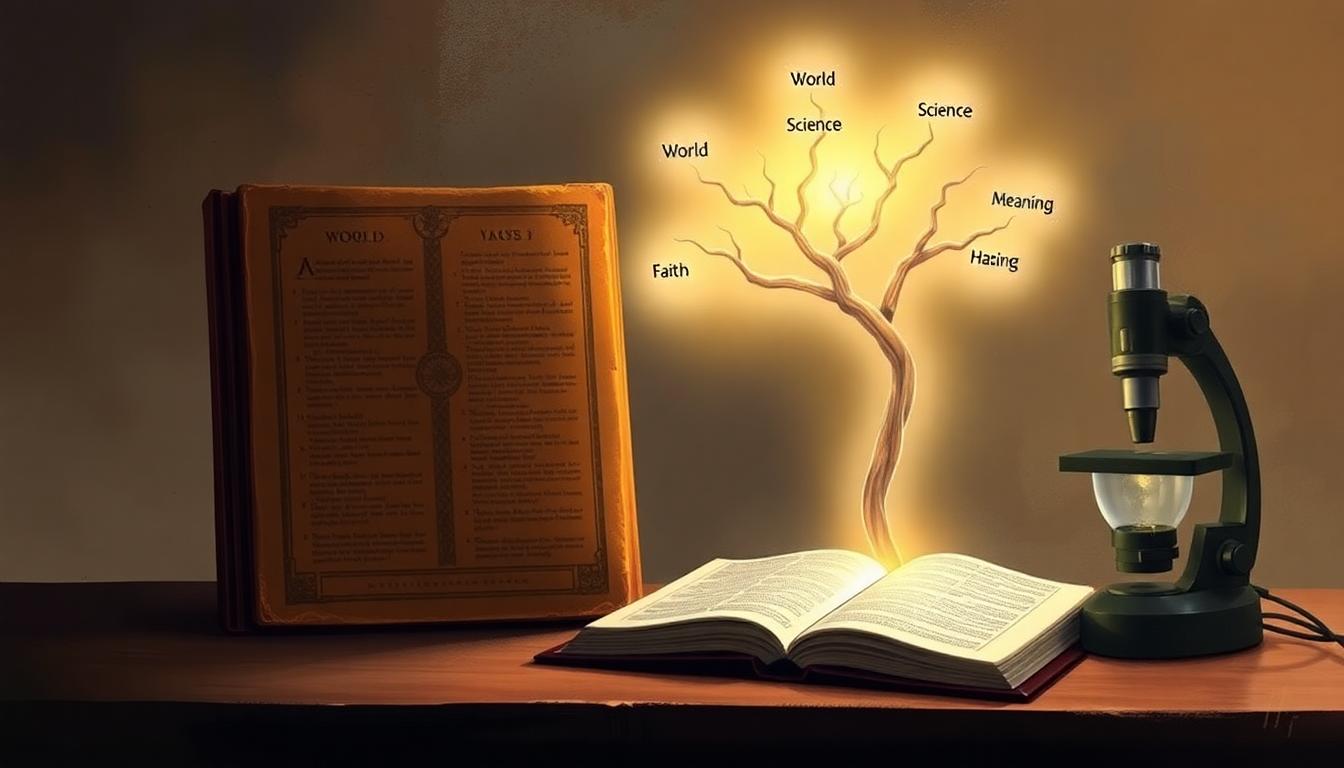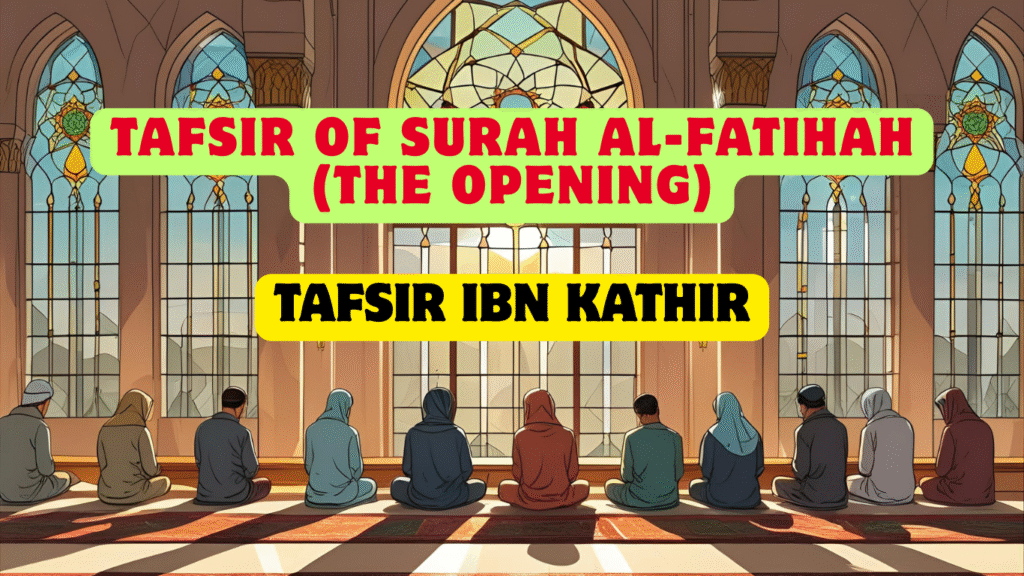Which Religion Is True According to Science? Key Facts for Curious Minds
For centuries, people have stared up at the night sky or studied the world around them and wondered if any religion stands as “true” by scientific standards. This question pulls together curiosity, centuries of heated debate, and the practical search for meaning. Science, with its careful focus on evidence and repeatable results, isn’t built to pronounce one faith right while denying the rest. Instead, it helps highlight where belief and observable fact overlap, clash, or run on parallel tracks.
In this post, you’ll see what science honestly says about religious truth, how different traditions weigh in, and where the conversation gets tangled. The science vs. religion debate is long and complex, but the facts show that while science answers how things happen, religion often tackles the why. Knowing the limits and the links helps make sense of one of humanity’s oldest questions.
Related video: All religions explained in 10 minutes
Can Science Decide If a Religion Is True?
The idea that science could somehow give a final answer about whose religion is true can sound exciting, but the truth is more complicated. Science helps us explore life’s biggest questions, yet it has its own limits. When it comes to weighing a religion’s claims, science can only go so far because it’s built to deal with the natural world—not everything that people wonder about.
What Science Can Test
Science tackles questions about the physical world. Its tools—telescopes, microscopes, experiments—help us see, measure, and test what’s around us.
Let’s look at what science does best:
- Measures physical evidence using repeatable tests.
- Investigates how the universe, nature, and life work.
- Challenges claims that can be observed, recorded, or repeated.
If a religion makes a statement about the age of the earth, a global flood, or how mountains formed, science can look for clues. For example, geologists and archaeologists study rocks and fossils to check if certain historical claims are likely or not. But when a claim is entirely spiritual with no measurable part, science can’t pull out a microscope and give us a “yes” or “no” answer.
The Limits of Scientific Tools
Many of the central ideas in most religions deal with things science doesn’t have the tools to measure. Think about questions like: Is there a purpose behind the universe? Does a soul exist? Is there a God who listens to prayers?
Science, by its own rules, only measures natural causes and effects. Its methods can’t reach beyond to test for the supernatural or spiritual. The consensus among most scientists and philosophers is clear: science isn’t designed to prove or disprove God. It’s like using a thermometer to weigh your suitcase—the tool simply doesn’t fit the job.
For more on why science doesn’t draw final lines on big spiritual claims, this explanation by Thomas Harper walks through the logic in straightforward terms: Does science prove that God does not exist? Probably not.
Science and the Question of Religious ‘Truth’
When people ask if science picks a “true” religion, the answer is simple: science cannot declare any religion true or false in an absolute way. Here’s why:
- Science asks, “How does this work?” Religion often asks, “Why are we here?” or “What does it mean?”
- Evidence for spiritual truths—like personal experience, meaning, or faith—is personal and doesn’t show up in a lab.
- Religious teachings often focus on purpose, destiny, and values, not testable facts.
If you’re curious where scientists themselves stand, the Pew Research Center offers data showing that many scientists hold personal beliefs, and see science and faith as answering different questions.
Here’s a table for a quick scan:
| Science Can Answer | Science Cannot Answer |
|---|---|
| How old is the earth? | Does life have a purpose? |
| What causes diseases? | Is there a God or afterlife? |
| How did galaxies form? | What is the meaning of suffering? |
At the end of the day, science is a bright lamp for seeing how things happen in the world. Religion, for many, is a way to explore the meaning behind what we see. The two can work together in one life, but each speaks in its own language.
How Scientists Define Truth and Evidence

An illustration showing a scientist at work, with gravity and germ theory explained on the chalkboard. Image created with AI.
Science is not just a pile of facts or a fancy word for “what’s true.” It’s a careful, rule-driven process to test ideas about how the world works. Scientists rely on evidence, experiments, and critical questioning. This approach helps separate what’s been proven again and again from what’s only suspected, guessed, or believed without proof. Let’s look at how scientists decide what counts as real knowledge.
The Rules of Scientific Proof
If you want to know what counts in science, you have to start with evidence. Scientists only accept something as “true” when it meets some tough standards:
- It’s observable. Anyone can see or measure it.
- It’s repeatable. If you do the same test, you’ll get about the same result.
- It’s testable. There’s a way to prove it wrong if it happens to be wrong.
- Others can check it. Anyone, anywhere, can try it for themselves.
Evidence is not the same as a hunch, a gut feeling, or even a personal experience. For scientists, only what you can test and repeat counts as reliable.
Fact vs. Theory vs. Hypothesis
Science sorts ideas into a loose ladder. Where something sits on the ladder depends on how much proof stands behind it.
| Term | What It Means | Example |
|---|---|---|
| Fact | An observation; “what is.” | Water boils at 100°C at sea level. |
| Hypothesis | An early idea or testable guess. | Bacteria cause illness. |
| Theory | A broad explanation, well-tested and supported by lots of facts. | Germ theory: most diseases come from microbes. |
A fact is a single piece of data—one observation that is true every time you check. A hypothesis is a good guess, built so you can try to prove it wrong. A theory is much bigger: it’s an explanation that ties together a huge amount of tested facts and has survived every real challenge. You’ll find more detail about these differences in this clear guide from Discovery: What’s the Difference Between a Fact, a Hypothesis, a Theory, and a Law?.
Real-World Examples: Gravity and Germ Theory
Think about gravity. You drop a ball, it falls. That’s a scientific fact. But the theory of gravity explains why the ball falls and predicts what will happen with the moon, the tides, and space travel. The theory holds up because tests around the world keep showing the same thing. You never see an apple float up.
Germ theory is another example. People once thought “bad air” caused sickness. Now we know: germs (tiny living things) spread disease. Doctors proved this by running countless experiments—swapping bandages, sterilizing tools, and seeing who got sick. No surprise, it’s the backbone of modern medicine.
Check out an easy explainer on how a theory earns respect: Scientific Theory Definition, Characteristics & Examples.
Why Faith and Spiritual Claims Don’t Fit This Model
Science’s strength is its toolbox: questions, measurements, other people checking your work. But this toolbox can’t measure everything people value or wonder about.
Beliefs about God, souls, miracles, or the afterlife are not wrong just because science can’t test them. These are ideas built on faith, tradition, or personal experience. There’s no device you can use to find a soul, just like you can’t use a ruler to measure love. Science can only work where its methods apply.
Many people find both science and spiritual belief important, but each speaks a different language. Science is about what can be checked and shown. Religion is about meaning, purpose, and hope—things that do not leave footprints in a lab.
To see how scientists weigh facts, theories, and beliefs differently, this in-depth Wikipedia article paints a clear picture: Scientific theory.
Ways Science and Religion Interact
Science and religion shape how many people think about reality, meaning, and what’s most important in life. But they do not always answer the same questions, nor do they always agree. There are places where one takes the lead and spots where the other fills in the gaps. Understanding how they fit together can help us sort through life’s biggest puzzles with more honesty and humility.
Religion’s Role Where Science Cannot See
Science uses evidence and careful tests to explain how things work. It answers questions about gravity, disease, stars, and living cells. But after all the facts are clear, another set of questions still hangs in the air: Why are we here? What is life for? Does anything matter in the end?
These are not gaps science has overlooked. They are puzzles science does not claim to solve.
- Meaning and purpose are questions that go deeper than test tubes and telescopes. Religion often answers these with stories, traditions, and teachings that help people make sense of their lives.
- Values and morals spring from beliefs about right and wrong, love, and duty. Science can describe what is, but it cannot tell you what ought to be.
- Hope and comfort are deeply personal and show up in moments of loss, joy, or crisis. Religion gives people a place to find peace or strength that science cannot measure.
Picture it like a map: Science draws the highways, rivers, and mountains. Religion fills in the stories, hopes, and reasons why people walk the paths they do.
Faith in Science and Faith in Religion
Many think science has no room for faith, but that’s not quite true. Both scientists and religious people put trust in things that are not seen directly.
- In science, people trust the work of experts, the methods that have worked for years, and results shared by others. You don’t run every experiment yourself or build every satellite, yet you trust reports from those who do.
- In religion, people trust teachers, sacred books, and traditions that have shaped their way for centuries. Faith can bring confidence in what cannot be proven, but is deeply felt or widely shared.
Here’s a table that compares what this trust looks like day to day:
| Area | Faith in Science | Faith in Religion |
|---|---|---|
| Source of trust | Experts, studies, scientific process | Leaders, sacred texts, tradition |
| Daily examples | Taking medicine, flying in an airplane | Prayer, rituals, following teachings |
| Evidence | Tests, experiments, data | Shared experience, wisdom, story |
Both kinds of faith help us move through a world that is far too big for one person to check every fact or story alone.
In practice:
- Scientific faith is like trusting that a bridge will hold because it’s built by skilled engineers and tested materials, even if you never did the math yourself.
- Religious faith is like trusting that a loved one cares for you, not because of a lab test, but because of long experience and shared stories.
Faith, in both science and religion, helps people step forward despite not having full proof of every detail.
For a deeper look at the models that shape this whole conversation, Ian Barbour outlined four main ways science and religion can relate: conflict, independence, dialogue, and integration. These are explained in easy terms at Science and Religion: Barbour’s 4 models, offering a simple guide for anyone trying to find a balance.
In the end, we need both kinds of trust—one built on repeatable proof, the other rooted in hope and meaning. Each has its place; together they help form a fuller picture of what is true and what matters most.
What Science Says (and Doesn’t Say) About Major Religions

The world’s biggest religions have lived through centuries of scientific discovery. Many people imagine science and religion pointing in opposite directions, but their relationship is more like a river that bends and forks, then sometimes joins together again. Science often tests the details of ancient stories, while religion searches for meaning and guides personal values, even when facts on the ground shift. Let’s look at concrete moments where these paths have crossed—sometimes bumping, sometimes blending—and how faith traditions adjust when science adds new details to the picture.
Challenges to Specific Claims: Evolution, the Age of the Earth, and Miracles
Some of the most famous questions at the crossroads of science and religion center on where we come from, how old the earth really is, and whether extraordinary events—what some call miracles—can be shown to happen in the natural world.
Evolution and Origins:
The story of evolution changed how people think about humanity’s place in nature. When Charles Darwin published his findings in the 19th century, many Christians and other believers around the globe felt their oldest creation stories were being challenged. Over time, most branches of Christianity, including the Catholic Church, have come to accept that evolution is not a threat to faith but a new way to marvel at creation. Others, including groups in evangelical Christianity, still believe in a literal reading of Genesis. Different branches of Judaism and Islam have their own mix of acceptance and resistance, sometimes seeing scientific findings as poetic rather than strict history. The National Academies explain how many religions now accept evolution as part of the story (The Intersection of Science and Religion).
Age of the Earth:
Modern science has shown that the earth is about 4.5 billion years old, using evidence from geology, astronomy, and physics. This finding stands at odds with the view, found in some forms of creationism, that the earth is only a few thousand years old. Yet many religious scholars now read timelines in sacred texts as symbolic, not as a calendar set in stone. In many Christian, Jewish, and even Islamic communities, religious teachings shift to embrace a deeper history, letting faith guide meaning without needing every detail to match.
Medical Miracles and Healed Bodies:
Stories of miracles—unexpected healings or events that break natural law—are core to every major religion. Science, by its rules, tests claims by measuring, repeating, and ruling out natural causes. Some cases of sudden recovery remain unexplained, but science stops short of calling them proof of the supernatural. Still, religious believers may see these as signs of deeper mysteries, even if doctors do not.
Here’s a table to capture where some famous scientific discoveries have tested or shifted religious teachings:
| Scientific Discovery | Religious Claim Tested | Adaptation or Response |
|---|---|---|
| Evolution by natural selection | Creation of humans in sacred texts | Many Christians, Jews, and Muslims interpret stories as metaphorical or compatible with evolution. |
| Age of the earth (4.5 billion years) | Earth created recently, e.g., in Genesis | Most major religions now accept the science or treat scriptural timelines as symbolic. |
| Medical explanations for disease | Illness caused by spirits, sin, or divine will | Many faiths now see science and medicine as tools that work alongside prayer or ritual. |
Adapting, Accepting, or Pushing Back: How Major Faiths Respond
Major faiths respond in their own ways when science draws new maps of reality.
- Some religious groups adapt by accepting new facts and reinterpreting sacred stories in a more open way. The Catholic Church, for example, recognizes evolution and the scientific age of the earth, while still honoring creation as God’s work. Many Jewish thinkers stress the importance of questioning and debate, letting ancient tales inspire values, not just history.
- Others maintain traditional teachings, setting boundaries around what they believe cannot be changed. This is clearest in some evangelical Protestant churches and a few other faiths, where a literal reading of scripture takes priority, especially on topics like creation.
- A growing middle ground accepts much of modern science, but holds that faith and doctrine resolve the biggest mysteries. These traditions honor modern medicine and technology, but leave the questions of purpose, soul, and the divine as spiritual truths that science is not built to answer.
The mix is real and ongoing. According to the Pew Research Center, about six in ten Americans believe science and religion can often be at odds, but many find ways to blend the two in their own lives.
For a deeper breakdown of how religions interpret and adapt to scientific findings, visit this primer: Science, Religion, Evolution and Creationism.
What Science Won’t Say: The Limits Remain
Science can confirm, correct, or challenge details—like the age of a bone or the process of disease. It can also show that some events once labeled miraculous now have clear explanations. Yet the heart of religion—trust, hope, wonder, meaning—beats in a different rhythm, outside the lab. Most religions now teach that science is not the enemy, but a partner for exploring how the world works. For the questions about purpose, God, or ultimate truth, faith and doctrine lead the way, lighting paths science cannot reach.
Conclusion
Science shines a clear light on how the universe works, but it does not pass judgment on the meaning behind it all. Like a microscope that reveals what the eye cannot see, science uncovers facts that shape our understanding of life, matter, and history. Yet the heart of spiritual belief beats in another rhythm, offering stories, comfort, and purpose that science cannot weigh or measure.
Every tradition meets the test of science in its own way, drawing lines or building bridges between ancient teachings and new discoveries. No faith earns a scientific stamp of approval, and no lab can measure the deepest mysteries people chase.
Keep asking questions and listening for truth, whether it comes from a textbook or the quiet places of the spirit. The search for meaning carries on, wherever your curiosity leads. Thank you for reading—share your own thoughts below and join the conversation.



